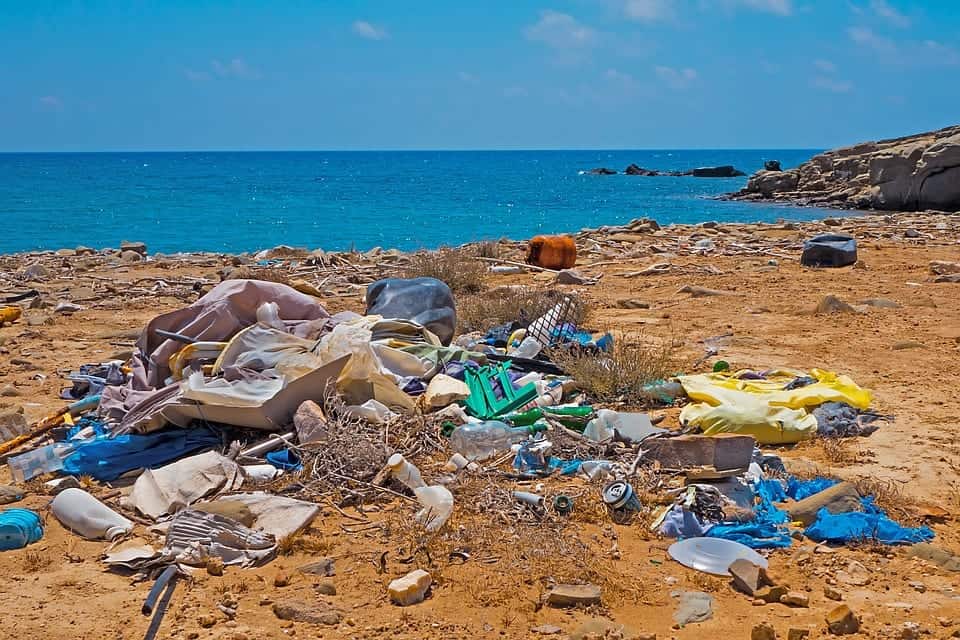Plastic free July is a global movement, run out of an office in Australia. This month is a reminder that we need to stop using so much plastic if we want to keep our planet inhabitable. Check out the website for information to help you identify waste, especially single-use plastics. Even better, it’s brimming with ideas for alternatives to using plastic. Take the Pesky Plastics Quiz to raise your awareness of the plastics you may be using and to give you ideas on how to reduce your carbon footprint.
The at work section of the site has suggestions for personal use reduction, tips for reducing plastic in the kitchen, and how to engage co-workers to band together for a plastic free July. Today is plastic bag free day, so that’s a good place to start.
Zero Waste Movement
We love convenience. Dinner delivery is just a phone call away and Amazon will drop anything you want on your doorstep. The problem is, all this convenience comes with a lot of packaging resulting in a lot of waste. One consumer-led, grassroots group of individuals and businesses has blown the whistle on all this trash to lead the zero waste movement. As stated in the name, the goal of those involved is to eliminate garbage altogether. But there are some baby steps society will need to take first. Act by changing the way you think to cut back on the need to produce so all the plastics we consume.

Zero waste shops are starting to gain traction. The idea is for customers to use their own reusable materials such as jars and tote bags rather than have the business supply plastic packaging. If you’re using your own container, it will be weighed empty and then weighed again once you’ve filled it up with product. In Canada, Bulk Barn started a reusable container program in February 2017. In Toronto, Unboxed is a grocery store with a zero waste mandate.
Canada’s Banning Single Use Plastics
Single use plastics—those items we use once and then throw away—have been given notice. In June, Prime Minister Justin Trudeau announced that Canada would ban single use plastics possibly within two years. Items on the chopping block include plastic straws, cotton swabs, drink stirrers, plates, cutlery and balloon sticks. Fast-food containers and cups made of expanded polystyrene, which is similar to white styrofoam, will also be banned.
Plastic bags, which can take up to one thousand years to decay, not only end up in landfills but also in the ocean. Marine life continues to be harmed by the glut of plastics infiltrating their ecosystem. A 2016 study found that only nine per cent of plastic waste was recycled in Canada and Environment and Climate Change Canada says that Canadians throw away more than 34 million plastic bags every day. The obvious solution is to ban it at the source and our government agrees.
Alternatives to Plastic
Here are just a few of the plastics we encounter every day and what you can use instead.
- Straws. Use stainless steel or go without.
- Bottled water. Get a reusable water bottle. Yesterday.
- Coffee. Invest in a great commuter mug. Yesterday.
- Plastic Bags. So many reusable bags are designed to take up little space in a purse or even a pocket. Stash a reusable bag in your backpack or something else you carry every day so it will be there when you need it.
- Take out packaging. Ask if you can use your own containers. Banning that, ask for paper boxes and say no to the plastic bag, plastic utensils, and wad of napkins.
- Plastic Utensils. Stash a set of silverware at work. Every dollar store has cheap cutlery that works great for this purpose.
- Food to Go
The take-out industry is one of the biggest offenders when it comes to single use plastic. It’s also an opportunity for you to can a personal impact. If you grab breakfast on the way into work and step out at noon to get lunch, that adds up to a lot of waste. Keep that routine going two or three times and week and multiply that by forty-two working weeks yearly and you’re looking at a lot of garbage.
Check out this video from the University of California. It’s about the amount of garbage produced by the take out industry and how single-use items are clogging landfills. Not only is there some fascinating and shocking information, but there are also some great ideas on how each of us can reduce waste.
Packaging accounts for nearly 30 percent of all waste generated across the country according to the Environmental Protection Agency
Reusable Containers Instead of Plastic
There’s more to reusable containers than your disorganized Tupperware shelf. Cafeterias, restaurants and shops are starting to give consumers the option to reuse. Even some major brands are recognizing growing consumer demand and the need to offer reusable packaging for plastics reduction. A new international shopping platform called Loop would do away with disposable containers for things like shampoo and laundry detergent. Instead, those goods will be delivered in sleek, reusable containers that will be picked up at your door, washed and refilled. The brands are selling the new option as durable, convenient, and reusable.
Initially, Loop will offer about 300 products, with plans to add to the list later. Partners include Procter & Gamble, PepsiCo, Nestle, Unilever, Mars, and Petcare just to name a few. Loop plans to expand to by the end of this year or early 2020, so keep your eyes peeled. This Loop explainer covers the basics.
Ban Personal Plastics
The most important part of reduce, reuse, recycle is the first two words. If we reduce and reuse materials, new ones don’t need to be made. We have the power to prevent waste before it’s produced. Lead the way in your office and show everyone how easy it is to work toward being waste free.









